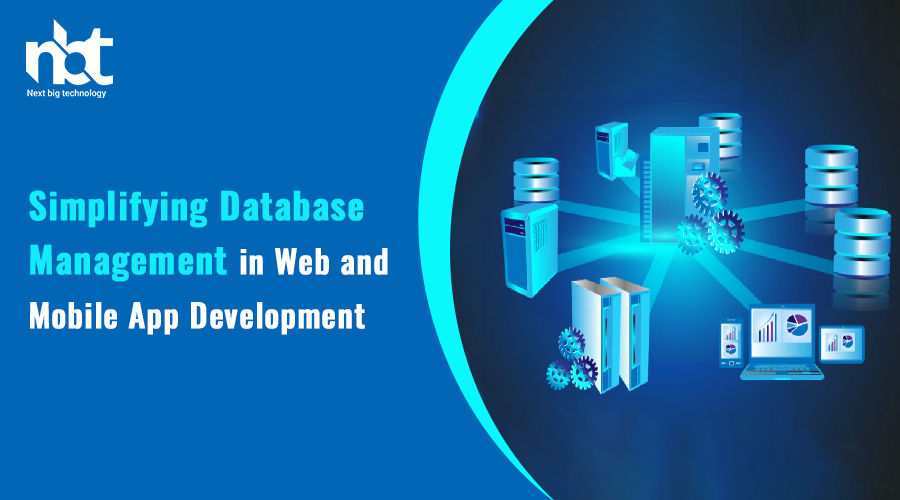Table of Contents
Introduction
Database management is the backbone of any web and mobile application. It involves storing, retrieving, and managing data efficiently. In this article, we will delve deep into the world of database management, exploring various aspects, from choosing the right database to implementing best practices.
Understanding Database Management

What is Database Management?
Database management refers to the process of efficiently storing, organizing, and managing data. It ensures data integrity, security, and accessibility for applications.
The Importance of Efficient Database Management
Efficient database management is crucial because it impacts the overall performance and reliability of your web and mobile applications. It affects how quickly data can be retrieved, how secure it is, and how well your app scales.
Type
Databases come in various types, each suited to different use cases.
Relational Databases
Relational databases use structured tables with rows and columns. They are excellent for applications with well-defined data structures.
NoSQL Databases
NoSQL databases are more flexible and can handle unstructured or semi-structured data. They are often used in scenarios where data schemas may evolve.
In-memory Databases
In-memory databases store data in the system’s main memory, allowing for lightning-fast data access.
Choosing the Right Database

Factors to Consider
Choosing the right database depends on factors like data structure, scalability, and performance requirements. We’ll discuss these factors in detail.
Case Studies
We’ll examine real-world case studies to illustrate the importance of selecting the appropriate database for your application.
Designing a Database Schema
Normalization
Normalization is the process of organizing data in a way that reduces data redundancy and improves data integrity.
Denormalization
Denormalization, on the other hand, involves optimizing data retrieval performance by allowing redundancy in data.
Data Modeling

Entity-Relationship Diagrams
Entity-relationship diagrams help in visualizing the data model and relationships between different entities.
Document Models
Document databases use a flexible, schema-less data model that suits certain application types.
Query Optimization
Indexing
Indexing improves the speed of data retrieval by creating efficient data access paths.
Query Execution Plans
Understanding query execution plans helps optimize query performance.
Data Security

Encryption
Data encryption ensures that sensitive information remains confidential.
Access Control
Implementing access control mechanisms prevents unauthorized access to your database.
Scaling Your Database
Vertical Scaling
Vertical scaling involves adding more resources to a single server to handle increased load.
Horizontal Scaling
Horizontal scaling spreads the database load across multiple servers.
Database Management Tools

Popular Tools and Their Features
We’ll explore popular database management tools and their unique features.
Best Practices
Backup and Recovery
Regular backups and recovery plans are essential for data protection.
Monitoring and Maintenance
Continuous monitoring and maintenance help identify and resolve issues proactively.
Challenges and Solutions
Handling Big Data
As data volumes grow, new challenges emerge. We’ll discuss strategies for handling big data.
Performance Bottlenecks
Identifying and addressing performance bottlenecks is vital for a smooth user experience.
Future Trends in Database Management

AI and Machine Learning Integration
Discover how AI and machine learning are shaping the future of database management.
Blockchain-Based Databases
Explore the potential of blockchain technology in database management.
Conclusion
Efficient database management is the cornerstone of successful web and mobile app development. By understanding the intricacies of database types, design, security, and scalability, you can ensure your applications run smoothly, providing excellent user experiences.
FAQs
- What is the role of database management in app development?
- Database management is crucial for storing, retrieving, and managing data efficiently, which is essential for web and mobile app development.
- How do I choose the right database for my application?
- Consider factors like data structure, scalability, and performance requirements when selecting a database.
- What are some best practices for database management?
- Best practices include regular backups, monitoring, and data security measures.
- What is the future of database management in technology?
- The future includes AI and machine learning integration and blockchain-based databases.
- Where can I learn more about database management tools?
- You can explore various resources and online courses to gain in-depth knowledge about specific database management tools.
Thanks for reading our post “Simplifying Database Management in Web and Mobile App Development”. Please connect with us to know more about Simplifying Database Management.









